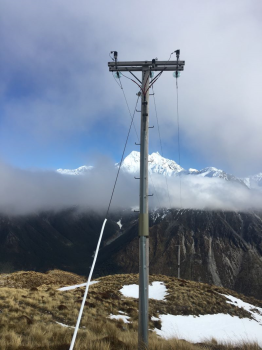Understanding land use and access requirements
We understand new or existing landowners do not always know what electrical network is on their land and why access is required. We value the opportunity to discuss and understand your requirements. Understanding and collecting information on owner/or occupiers, the land use and your requirements of us to access the land is important for us to plan and undertake our works.
Orion collects landowner and/or occupier's contact details so that we can contact you to discuss our access and work requirements. We also require after hours/emergency contact details so we can access our network outside business hours. Orion works alongside landowners to keep staff and contractors safe by discussing access requirements, hazards and key landowner or occupier contacts.
Some of the land access information we consider:
- Land use e.g. industrial, commercial, or agricultural.
- Security restrictions (locked or electric gates, dogs).
- Safety protocols e.g. Escorts required or sign in requirements.
- Biosecurity restrictions.
- Prior notification for inspections.
- Best access points and routes to access network.
- Narrow tracks of culverts/bridges.

